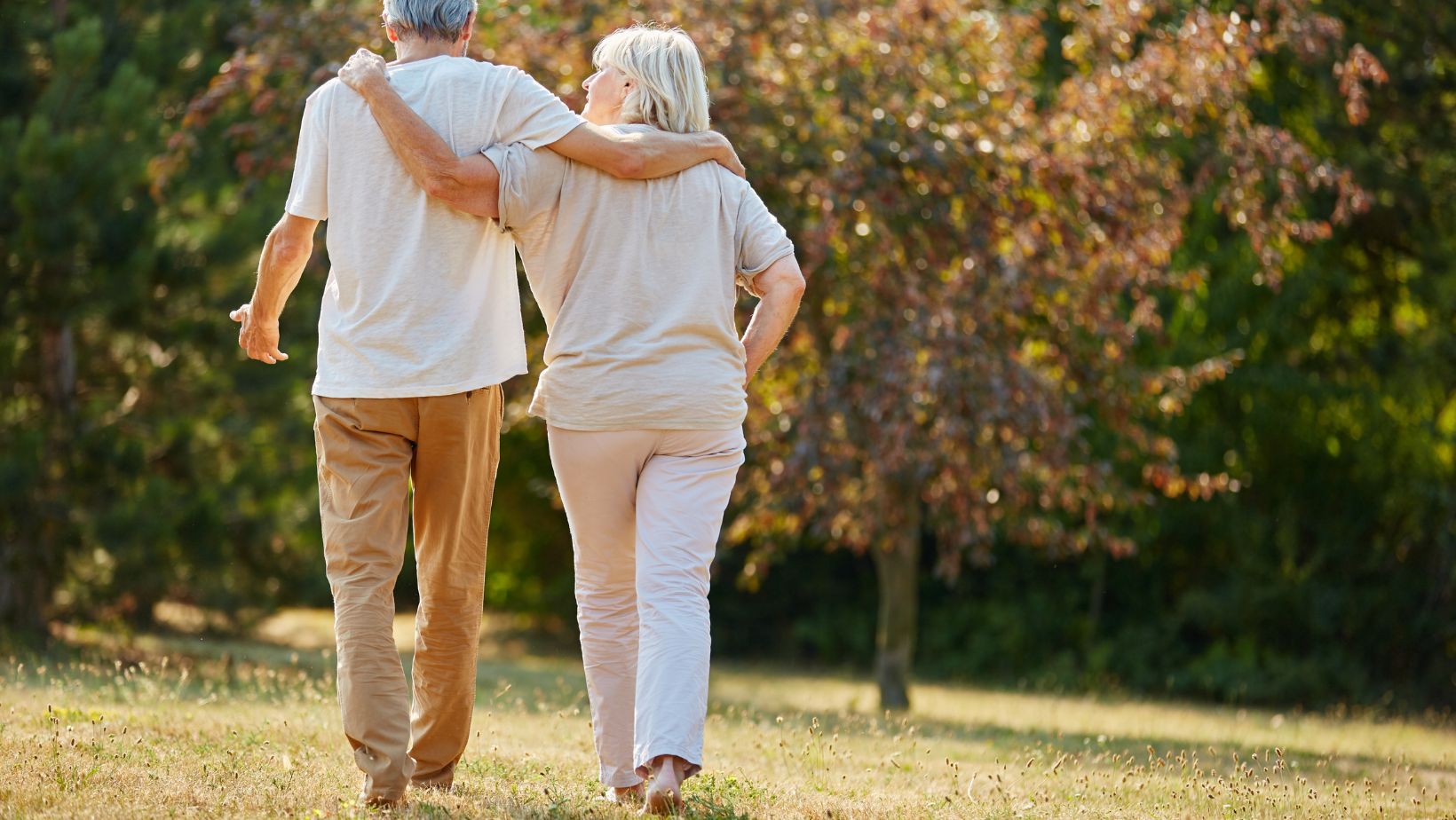Outdoor spaces in senior care facilities are more than just aesthetic features—they play a vital role in enhancing residents’ quality of life. Access to gardens, patios, and other outdoor areas allows seniors to enjoy fresh air, sunlight, and nature, which can significantly improve their mental and physical well-being. From reducing stress and encouraging social interaction to promoting mobility, these environments offer benefits that go beyond the confines of indoor care.
For families, evaluating the quality of these outdoor spaces is essential when choosing a facility for their loved ones. Well-maintained and thoughtfully designed environments not only reflect the level of care provided but also ensure that residents can live with dignity, safety, and joy.
Why Outdoor Spaces Matter for Seniors
Spending time outdoors has profound effects on mental and physical health, especially for seniors. Fresh air, natural sunlight, and exposure to green spaces can reduce stress, elevate mood, and even improve cognitive function. According to a study published by the National Institutes of Health, regular access to outdoor environments can decrease symptoms of depression and anxiety while promoting overall well-being in older adults.
For seniors in nursing homes or assisted living, outdoor spaces encourage light physical activity, such as walking or gardening, essential for maintaining mobility and strength. These spaces often become hubs for social interaction, whether it’s chatting with other residents or enjoying visits with family members in a comfortable, welcoming setting.
In addition to these benefits, simply being outdoors can help regulate circadian rhythms, improving sleep patterns in elderly residents. Thus, outdoor areas are not just a luxury but an essential component of holistic senior care.
Key Features of Ideal Outdoor Spaces in Senior Facilities
Not all outdoor spaces are created equal, and for senior care facilities, thoughtful design is crucial. An ideal outdoor environment should balance safety, accessibility, comfort, and visual appeal to ensure it meets the unique needs of elderly residents.
- Safety First
Safety is a top priority when designing outdoor spaces for seniors. Features like non-slip walkways, handrails along paths, and proper lighting ensure residents can navigate the area without fear of falling. Secure fencing or barriers also provide peace of mind, especially for those with cognitive conditions like dementia.
- Accessibility for All
Accessibility is essential to making outdoor spaces inclusive. Wheelchair-friendly paths, ramps, and raised garden beds allow all residents to engage with their environment, regardless of mobility challenges. Seating areas should be strategically placed along pathways, offering rest stops for those who tire easily.
- Comfortable and Functional Design
Seniors are more sensitive to temperature extremes, so providing shade through pergolas, umbrellas, or trees is vital. Comfortable seating options with ergonomic designs encourage residents to spend more time outdoors. Weather-resistant furniture ensures these spaces remain inviting year-round, even with exposure to the elements.
- Aesthetic Appeal and Engagement
A well-designed outdoor space should stimulate the senses. Vibrant gardens filled with flowers, fragrant plants, and gentle water features create a serene and uplifting environment. Spaces can also include bird feeders or butterfly-friendly plants to invite wildlife, offering a simple yet effective form of engagement for residents.
By prioritizing these features, senior care facilities can transform outdoor spaces into meaningful extensions of care, promoting both physical and emotional health for their residents.
Comparing Senior Care Practices Across Locations
Champaign, Illinois: A Midwestern Approach to Outdoor Spaces
In Champaign, senior care facilities often emphasize seasonal outdoor experiences. Gardens and patios are designed to withstand the Midwest’s changing weather, featuring shade structures for hot summer days and sturdy furniture built for seasonal fluctuations.
However, some families have reported concerns about underutilized or poorly maintained outdoor spaces, which may indicate broader issues with the quality of care.
How the Midwest Compares to Warmer States
Facilities in similar Midwestern climates, such as Wisconsin or Indiana, focus on practical designs prioritizing safety and accessibility. Comparatively, regions with warmer climates, like Florida and Arizona, take a different approach. These states often integrate year-round outdoor living into their care models, offering residents:
- Shaded walking trails and open-air activity spaces.
- Expansive gardens designed to withstand heat.
- Extra precautions to protect residents from intense sun and heat exposure.
This regional comparison highlights the importance of evaluating outdoor spaces in relation to local conditions and climate.
Addressing Neglect in Outdoor Spaces
For families in Champaign who encounter neglected outdoor areas—such as broken walkways, overgrown gardens, or inaccessible patios—there may be cause for concern. Poorly maintained spaces can reflect broader neglect in care facilities. Consulting a Champaign nursing home abuse lawyer can help families understand their options and hold facilities accountable for ensuring safe, enriching environments for their loved ones.
How Families Can Advocate for Quality Outdoor Environments
Families play a crucial role in ensuring that their loved ones in senior care facilities have access to safe, well-maintained outdoor spaces. During visits or when evaluating potential nursing homes, there are key steps families can take to assess the quality of these environments and advocate for improvements if needed.
Evaluating Outdoor Spaces During Facility Visits
When touring a senior care facility, it’s important to assess the quality and usability of the outdoor spaces. Use the following checklist and questions to ensure these areas meet safety, accessibility, and maintenance standards:
What to Look For
- Maintenance: Are the gardens, patios, and walkways clean, well-kept, and free of hazards? Overgrown plants, broken furniture, or debris can indicate neglect.
- Safety Features: Are there non-slip walkways, handrails, and shaded seating areas to ensure seniors can use the space safely?
- Accessibility: Are pathways wide enough for wheelchairs? Is seating designed for easy access by those with limited mobility?
- Seating Options: Are there strategically placed benches or chairs along pathways for rest breaks?
Questions to Ask Facility Staff
- “How often do residents use outdoor spaces, and is access supervised?”
- “Are there planned activities that encourage outdoor engagement?”
- “What measures are taken to maintain outdoor areas year-round?”
By combining visual observation with direct questions to the staff, families can evaluate the facility’s priority for outdoor access and engagement for residents.
Advocating for Improvements
If you notice issues in a facility’s outdoor spaces, don’t hesitate to voice your concerns. Request a meeting with management to discuss specific problems and suggest improvements. Emphasize the importance of outdoor access for residents’ mental and physical health. Facilities that are committed to providing high-quality care will often welcome feedback and take steps to address shortcomings.
By staying vigilant and proactive, families can ensure that outdoor spaces are not just an afterthought but a vibrant part of their loved one’s care environment.
Creating Outdoor Spaces for Loved Ones at Home
For families caring for elderly loved ones at home, creating a safe and engaging outdoor space can be a deeply rewarding endeavor. A thoughtfully designed backyard, patio, or garden promotes physical activity and relaxation and serves as a place for meaningful social interactions.
Focus on Safety and Accessibility
Quick Checklist for a Safe and Relaxing Outdoor Space
✔️ Install non-slip surfaces and adequate lighting for safety.
✔️ Ensure pathways and entrances are wheelchair-accessible.
✔️ Provide shaded areas using pergolas, umbrellas, or trees.
✔️ Include ergonomic, weather-resistant seating for maximum comfort.
✔️ Add features that engage the senses, such as fragrant plants, bird feeders, or a water fountain.
Once essentials are in place, add features to enhance enjoyment and functionality.
When designing an outdoor space for seniors, safety should be the priority. Consider these features:
- Non-Slip Surfaces: To prevent falls, use slip-resistant materials for walkways, especially in areas prone to rain or dew.
- Proper Lighting: Install adequate lighting along pathways and seating areas to ensure visibility, even during early evenings.
- Accessible Design: Include wheelchair-friendly paths, ramps, and raised garden beds to accommodate mobility needs.
Comfort and Relaxation
Comfortable, weather-resistant seating and ample shade make outdoor spaces more enjoyable for seniors. Patio umbrellas, pergolas, and shade sails make outdoor areas more inviting in warm weather.
Incorporate Nature and Activity
Engaging with nature has therapeutic benefits. Simple additions like planters with vibrant flowers, bird feeders, or a small water feature can create a calming atmosphere. To encourage light gardening activities, set up raised garden beds where seniors can plant herbs or flowers without straining their backs.
Enhance the Space with Quality Products
Carefully chosen outdoor furniture and accessories can transform any space into a functional and beautiful retreat for seniors. Look for materials and designs that balance durability, comfort, and style, such as:
- Aluminum Patio Sets: Lightweight, weather-resistant, and low-maintenance—ideal for seniors seeking durability.
- Rattan Furniture: Stylish and comfortable, perfect for creating a cozy, inviting retreat.
- Wooden Garden Benches: A classic option for shaded areas, combining elegance with practicality.
- Adjustable Umbrellas and Shade Sails: Flexible solutions for protecting against direct sunlight and creating shaded lounging areas.
These additions enhance comfort and encourage regular use, making outdoor areas inviting spaces for relaxation and interaction.
Conclusion
Outdoor spaces are more than just a luxury in senior care facilities—they are vital to promoting physical health, emotional well-being, and social connection. A thoughtfully designed garden or patio can serve as a sanctuary, providing seniors with a space to move, relax, and engage with nature.
For families, these spaces also reflect the quality of care offered by a facility. Advocating for safe and accessible outdoor environments helps loved ones enjoy their many benefits. For those caring for seniors at home, creating a functional and inviting outdoor retreat is a deeply rewarding way to support their well-being.
Need ideas to get started? Explore these expert tips for transforming your outdoor space and discover practical ways to create a space that’s safe, beautiful, and designed with seniors in mind.










